Modular Roads
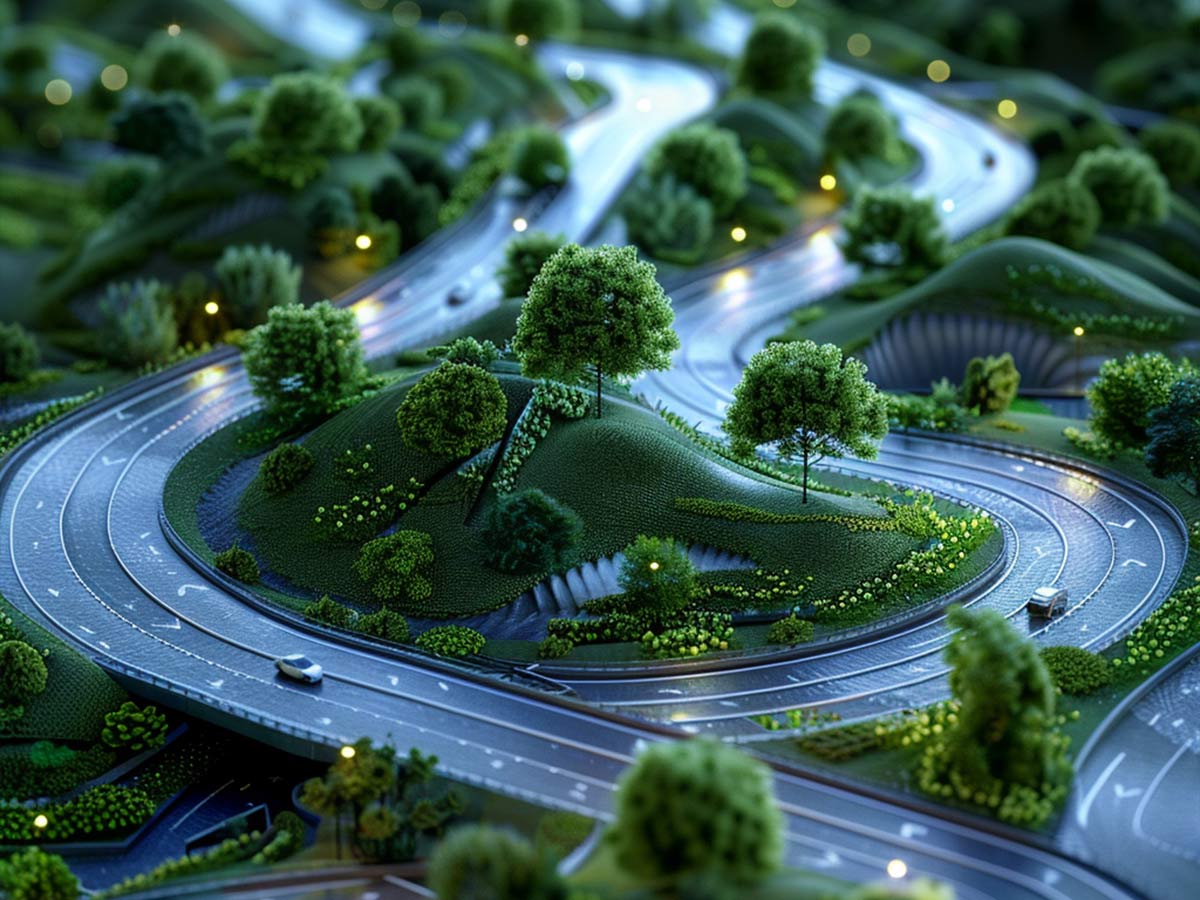
Imagine roads that are like giant Lego sets! In the future, instead of the typical asphalt roads, we might be cruising on modular roads in many parts of the country. They’d be built from prefabricated sections that snap together like building blocks.
These customizable roadways can be easily repaired, upgraded, or even rearranged on the fly. Gone would be the days of spending countless hours in traffic for road construction or any other construction when roads could be diverted or replaced on a whim.
Stacked Highways
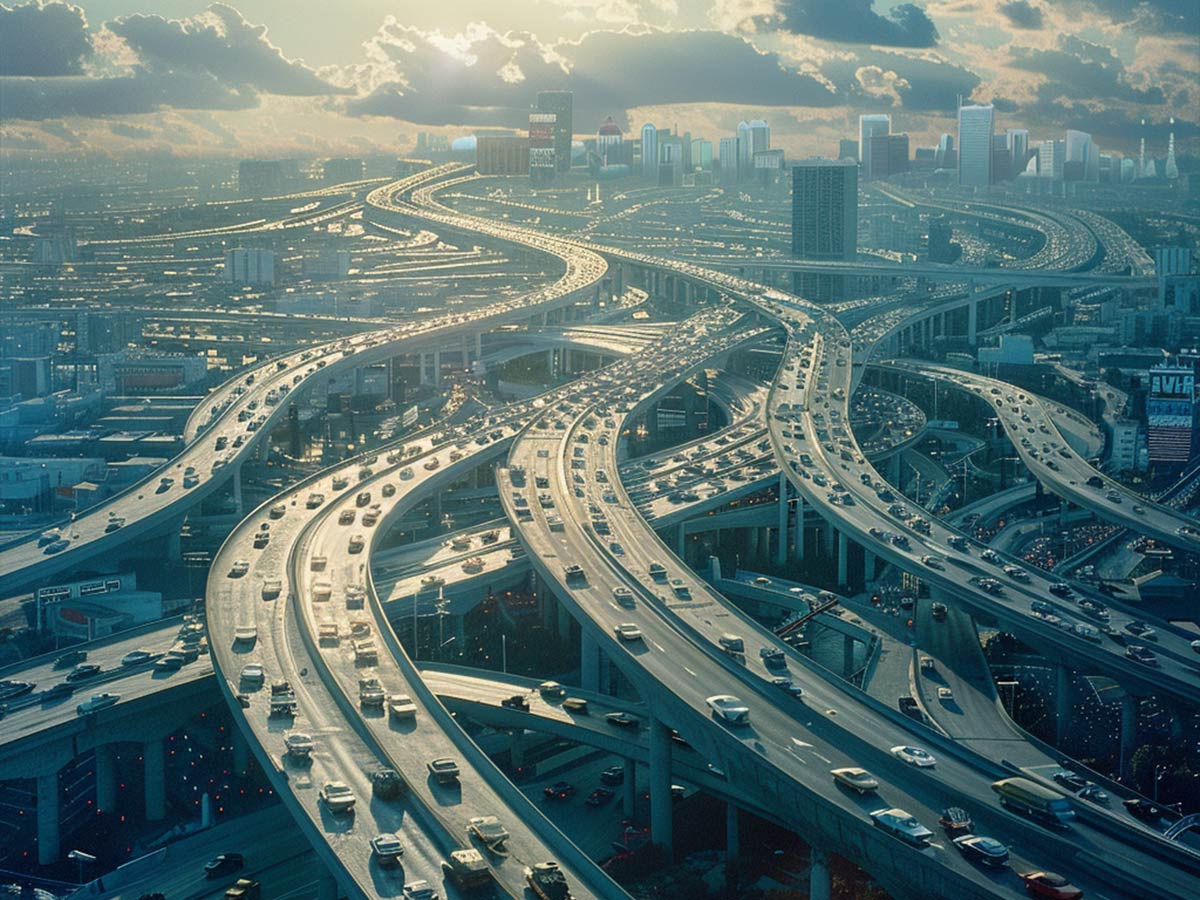
Stacked City Streets
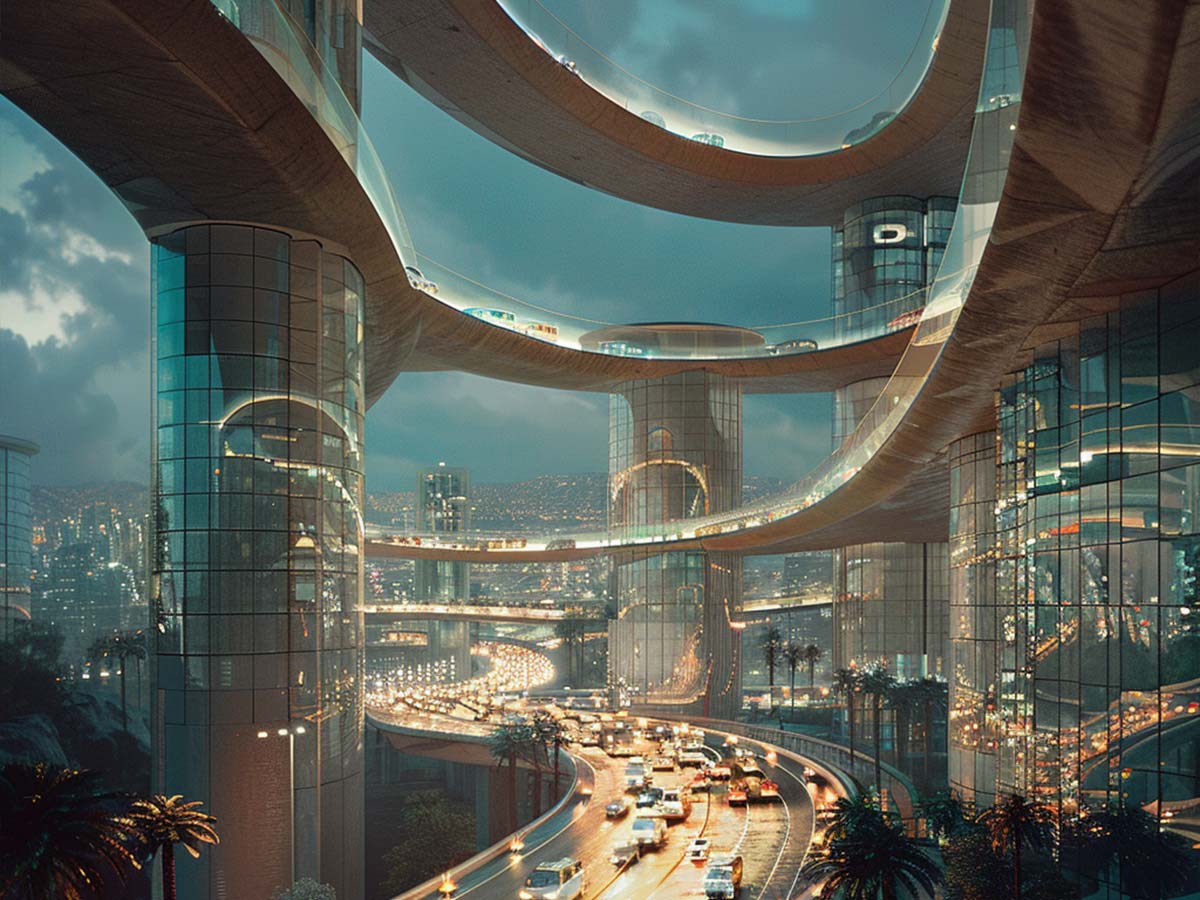
And as we reach deeper into cities, where buildings have grown taller to accommodate the growing population and booming businesses, we’ll need a more efficient means of city travel.
That may mean we find stacked streets, as seen here, where cars can travel from building to building, getting to work on time without struggling to find parking or taking away countless minutes of their day ascending levels of a parking garage.
Stacked Freeways
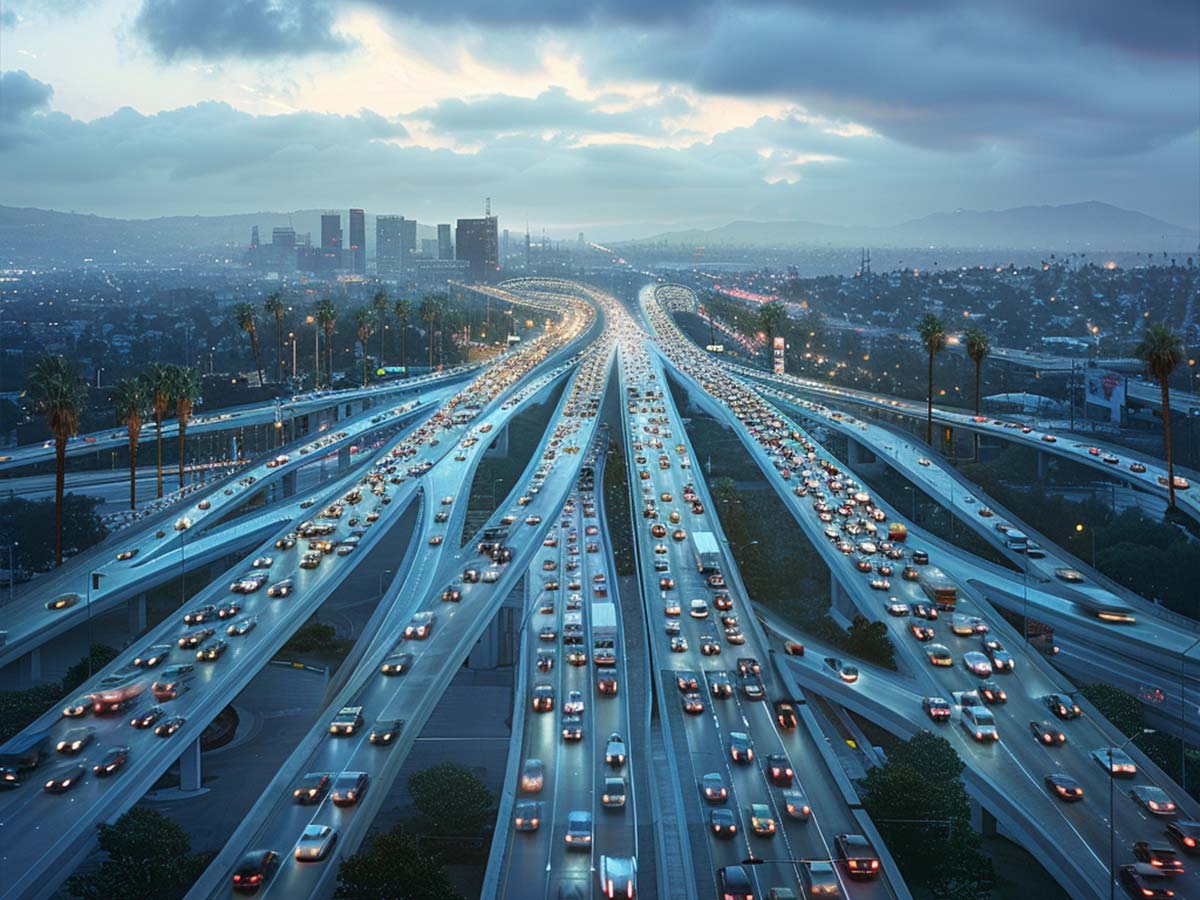
Freeway Systems will also need a futuristic upgrade. With more cars on the road, we’ll need a system to support them.
That system will likely include separate systems for autonomous cars, more carpool lanes, and off-ramps to accommodate the needs of cities and their populations.
Freeway Charging Stations
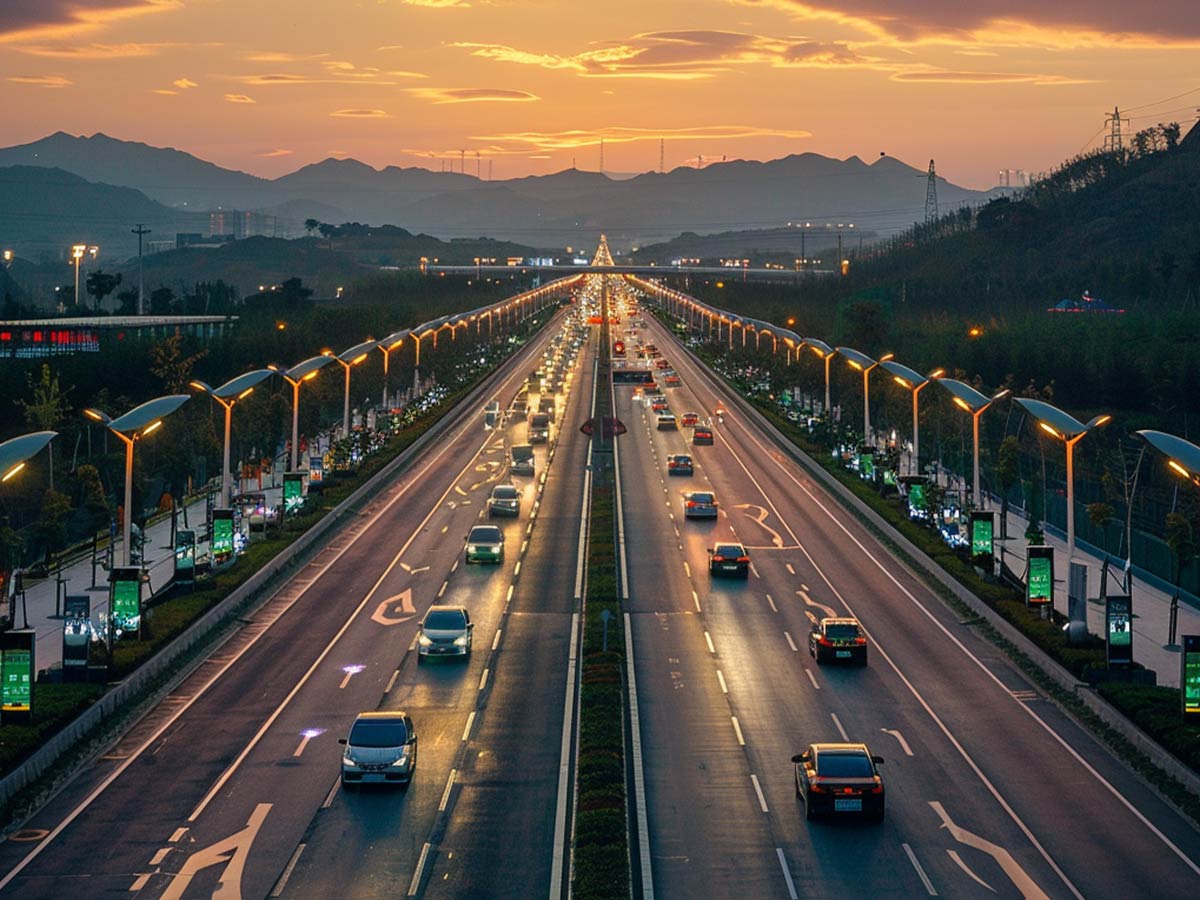
As electric cars become more and more popular, their prevalence on our roads will require a means to keep everyone moving. With the technology as it exists now, the inability to travel long distances in an electric car is problematic.
To accommodate electric cars on the road to prevent breakdowns and collisions, drivers will need plenty of places to charge their cars, and that may include the side of the freeway if necessary. Imagine instead of your typical pitstop, there were charging stations for your EV.
Street Charging Stations

Streets will also need plenty of charging stations. While charging at home is certainly an option, it is highly probable that you will need to charge in the city occasionally.
While it may cost drivers to charge their vehicles as they do now, the availability of charging stations in public areas is not enough to accommodate a significant number of people, let alone the entire population, once they convert to electric vehicles.
Dedicated Autonomous Car Lanes

At least until every vehicle on American roads is fully autonomous and that technology is perfected, it may be necessary for drivers relying on autonomous assistance to be separated from other drivers.
In addition to the threat the current technology poses, it may not be safe for those in autonomous vehicles to share the same lanes as those driving themselves, where driver behavior is more unpredictable, particularly in terms of speed.
Speed Monitored Traffic Lanes

While there are certainly radars that track driver speed now, these radars also rely on police to enforce speeding violations. Monitored traffic lanes, like red light cameras, could incentivize drivers to stay under the limit.
Potentially, monitored traffic lanes could also enforce the speed limit not by punishing drivers for going over but by limiting the vehicle’s ability to go over a certain limit. In this case, the speed limit could be adjusted as needed so that cars could never travel faster than the flow of traffic.
Solar-Powered Roads
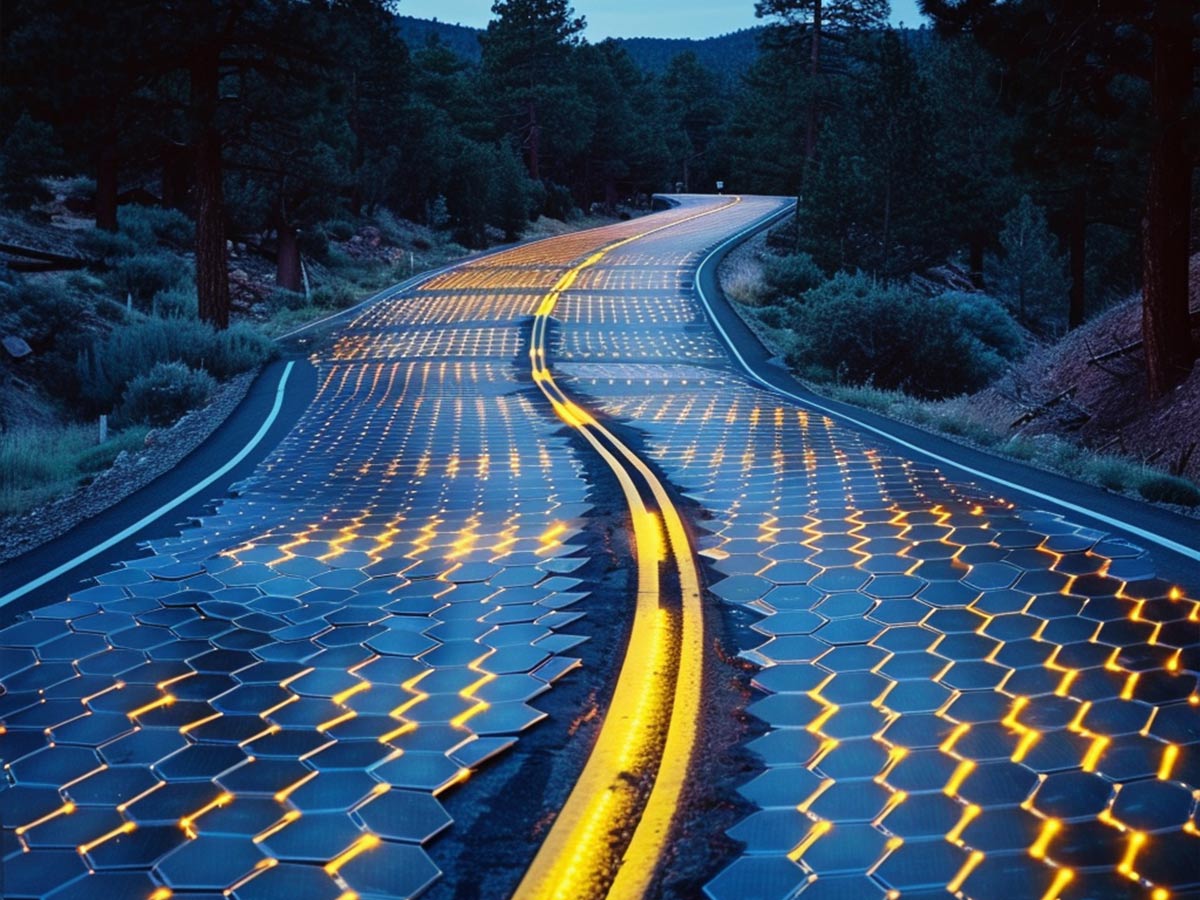
This concept imagines roadways that aren't just passive slabs of concrete but active power generators. futuristic roads would be paved with specially designed solar panels that soak up the sun's rays and convert them into electricity.
They would, of course, be strong enough to hold the weight of a car, making them nearly indestructible. The solar panels we have now, could never be used as road material, but in the future, we’ll likely develop panels that are much more durable.
Self-Healing Roads
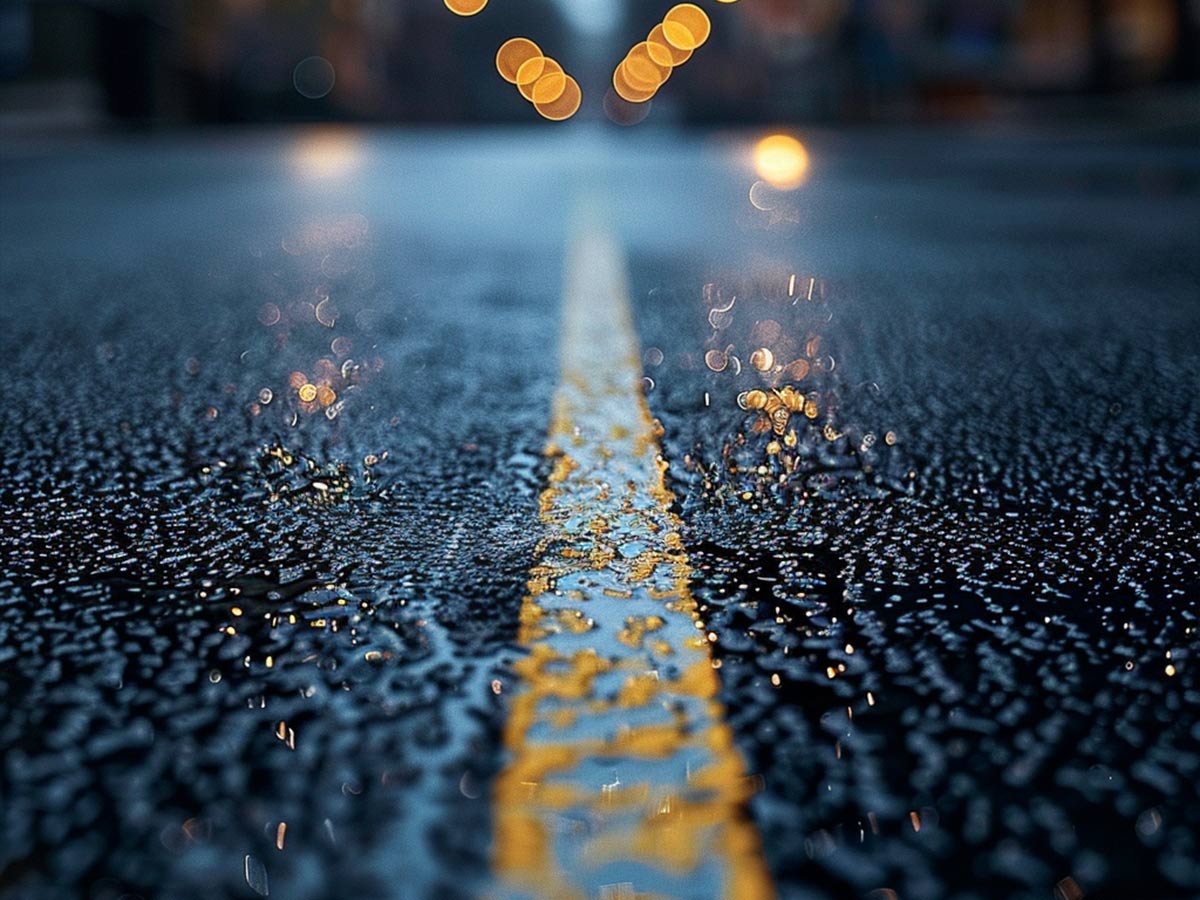
Potholes are a common problem among roads across the country, but with the concept of self-healing roads, we could eliminate that problem. One method involves incorporating a special material into the asphalt itself. This material could contain microscopic capsules filled with a healing agent. When a crack forms, the capsules break open, releasing the agent that binds the crack shut, effectively sealing the damage.
Another approach incorporates bacteria. Yes, you read that right! When water seeps into a crack and comes into contact with bacteria embedded in the concrete, they are then activated and triggered to produce limestone, a key component of concrete.
Kinetic Roads
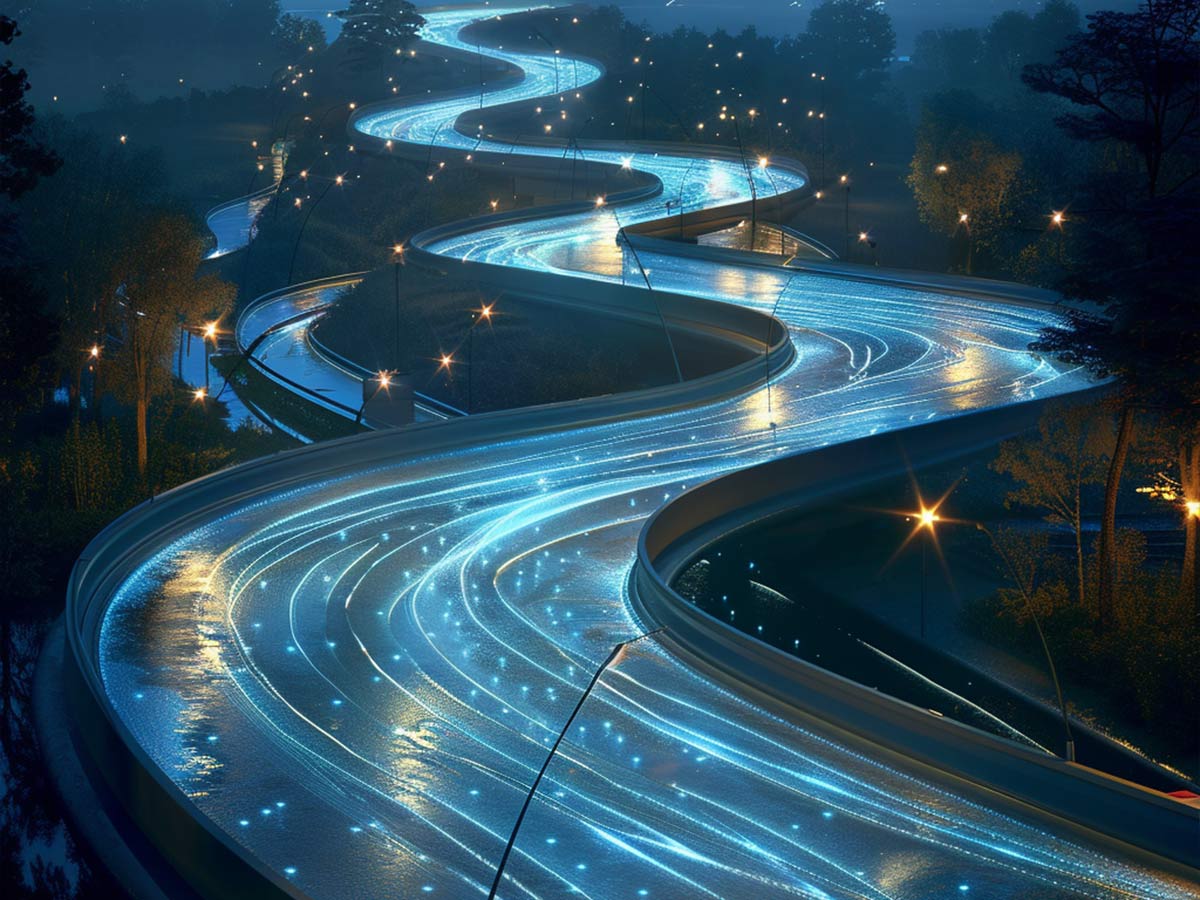
Other possible types of energy-producing roads are kinetic roads. These futuristic roads would harness the kinetic energy generated by moving vehicles and convert it into electricity. This kinetic energy could potentially be used to power cities.
How would it work? Embedded beneath the road surface would be special panels containing piezoelectric materials that have the unique property of generating electricity when pressure is applied. As your car rolls over the panels, the weight and movement create pressure that would cause the materials to produce electricity. This electricity could then be collected and fed back into the power grid, used to power streetlights or even charge electric vehicles on the go!
Luminescent Roads
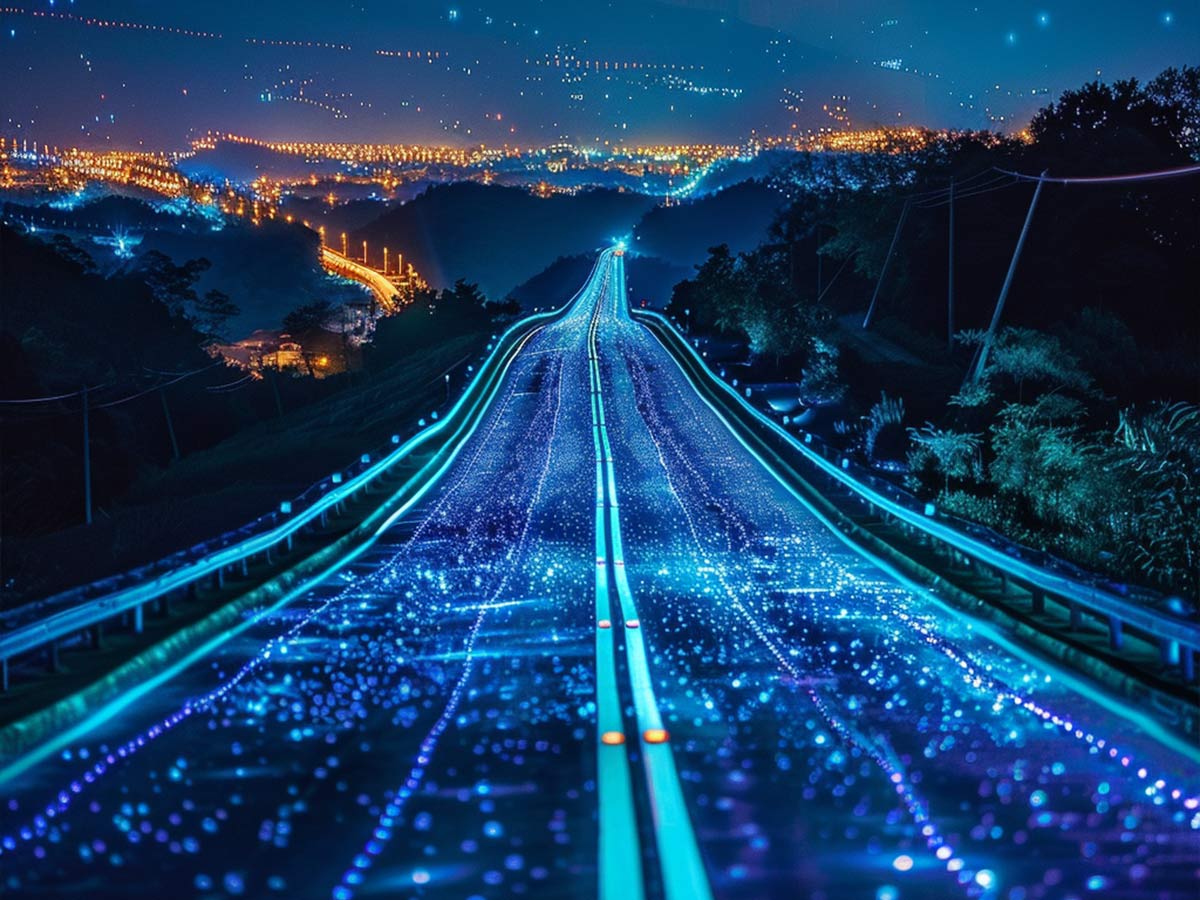
Imagine a future where nighttime driving doesn't require headlights. These luminescent roads incorporate materials that capture and store light during the day and then emit a soft glow at night, illuminating the path without the need for additional lighting.
This soft glow wouldn't be blindingly bright but just enough to illuminate lane markings, road signs, and edges, creating a more defined and visible path for drivers. Another approach involves the use of special paints infused with tiny glass beads containing reflective materials. These beads would capture car headlights at night and re-emit the light, creating a subtle illumination effect.
Adaptive Roads
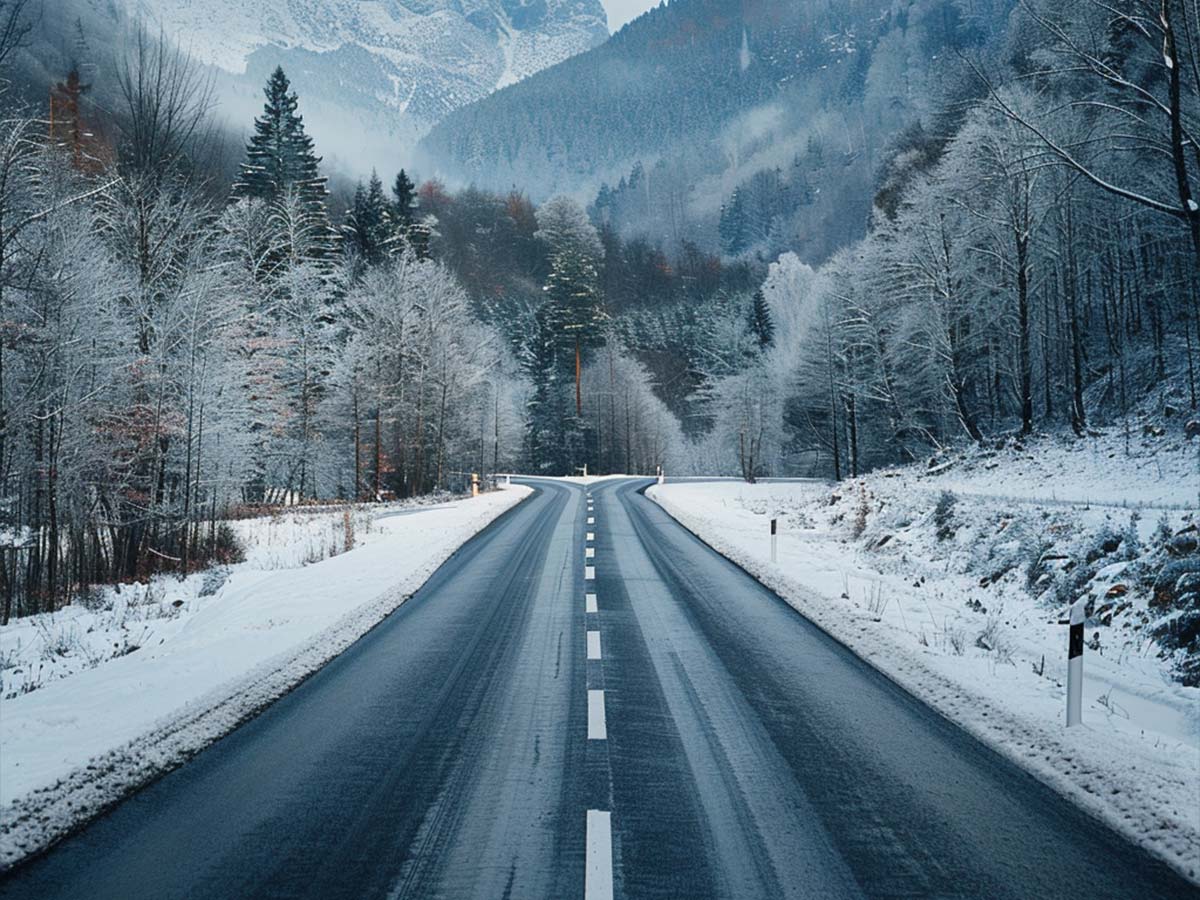
Our planet's climate is changing, and our roads need to adapt. Enter climate-adaptive roads, a concept that reimagines transportation infrastructure to withstand the increasing intensity and frequency of extreme weather events. Imagine roads designed to handle anything from scorching heatwaves to significant downpours.
Climate-adaptive roads go beyond just withstanding the elements. These roads might also integrated sensors that monitor temperature, moisture levels, and potential for landslides. This real-time data could be used to predict and prevent road closures due to extreme weather events.
Vertical Farms
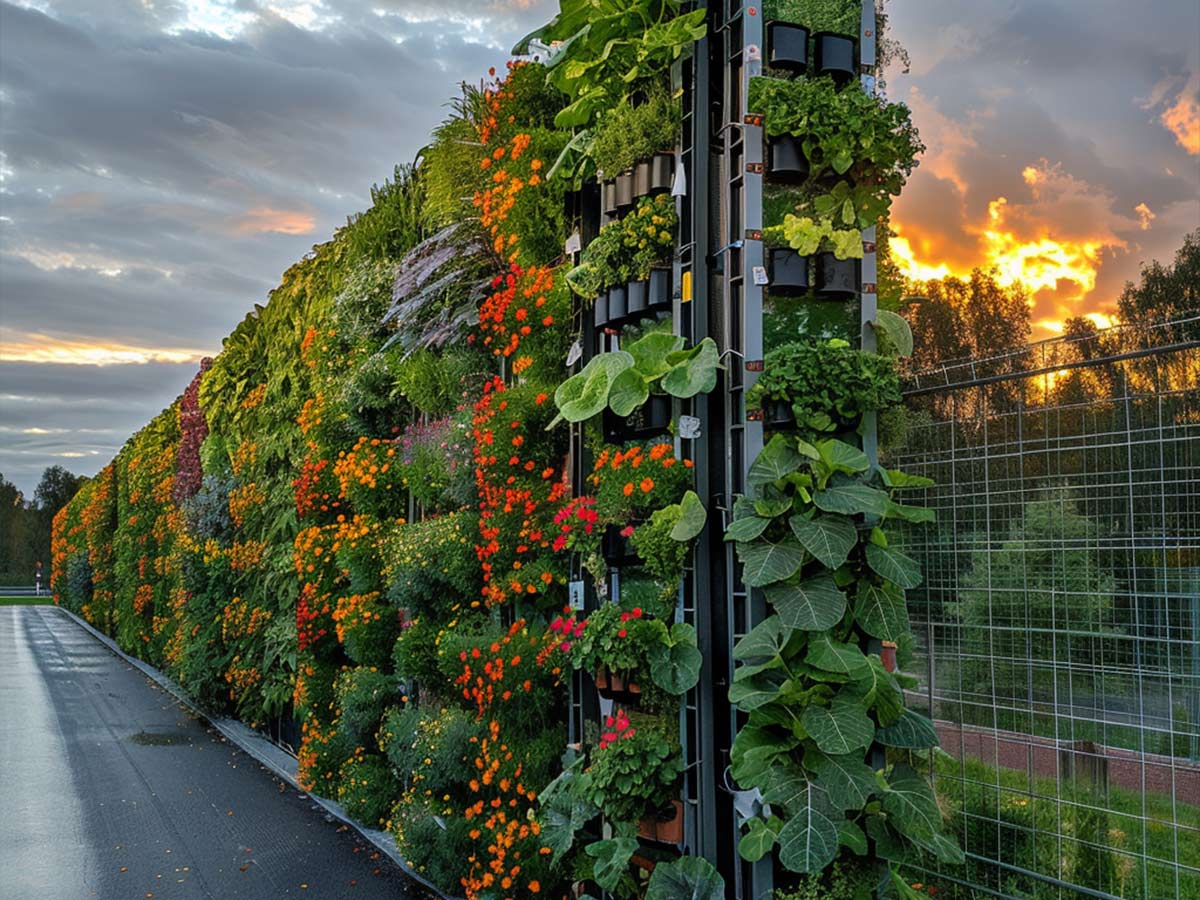
The concept of vertical farming, where crops are grown in stacked layers indoors, is gaining popularity as a way to increase food production using less land and water. Eventually, we might start seeing this concept utilized outdoors in cities where farming might not otherwise be possible.
Vertical farms can produce significantly more food per square foot compared to traditional farms. This could be particularly beneficial in urban areas with limited space for agriculture. By growing food closer to consumers, transportation costs and emissions associated with long-distance food deliveries would be minimized. Additionally, vertical farms can act as natural air filters, absorbing pollutants from traffic and improving air quality in urban areas.
Smart Traffic Management
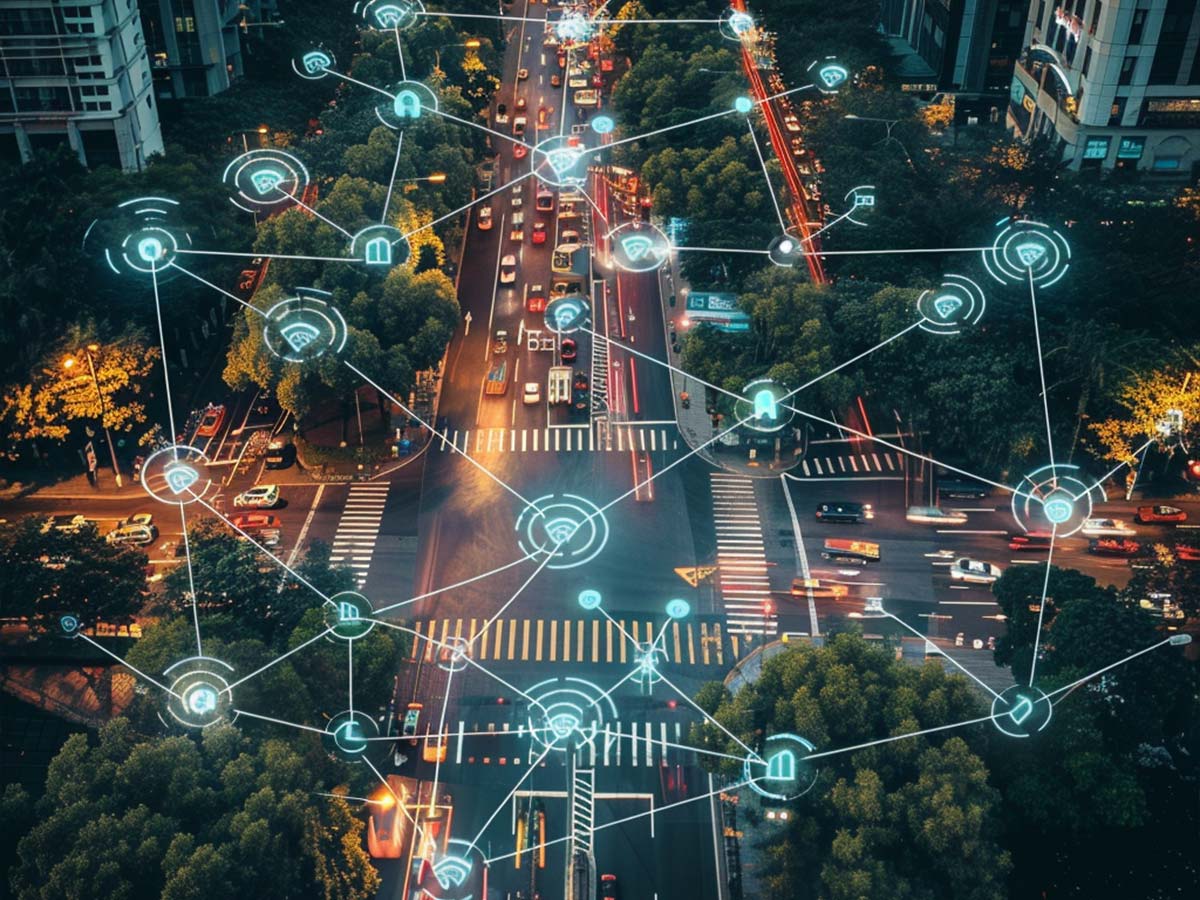
Traffic congestion. It's a universal headache, a daily dose of frustration on our roads. But what if technology could intervene, creating a smoother, more efficient traffic flow?
Interconnected cameras and sensors embedded in roads and intersections could collect real-time data on traffic volume, speed, and incidents. This data is then fed into a central hub, where intelligent algorithms analyze it and make adjustments to traffic signals, lane closures, and even variable speed limits.
Interactive Lane Markings
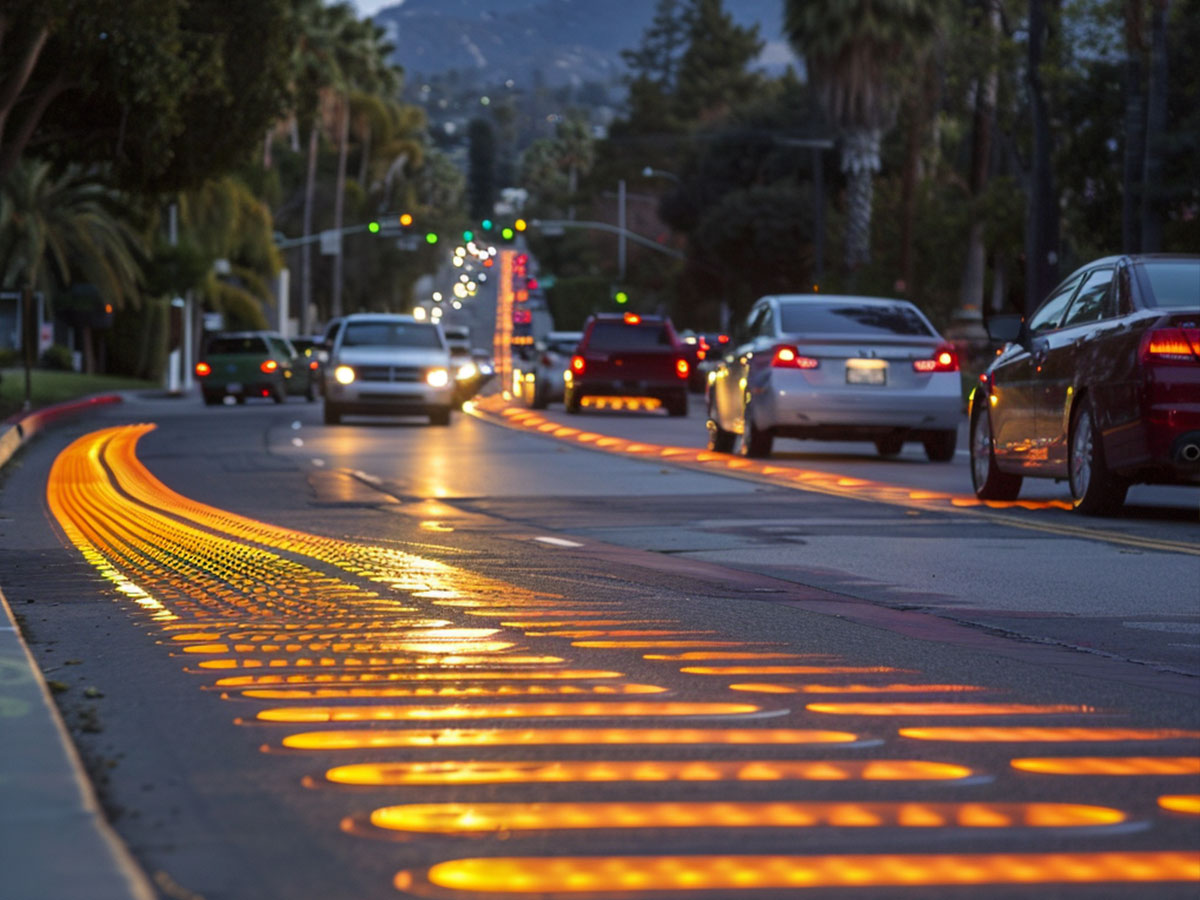
In a future where lane markings on the road aren't just painted lines, dynamic displays could adapt to traffic conditions and driver needs. This concept holds immense potential for improving safety, efficiency, and the overall driving experience.
Lane markings would be embedded with LEDs or other light-emitting materials that can change color or display symbols. Based on traffic flow data, the markings could dynamically adjust lane widths. For instance, during rush hour, a two-lane highway might temporarily convert one shoulder lane into a dedicated carpool lane, or in case of accidents or hazards ahead, the lane markings could flash red or display warning symbols.
Subterranean Road Networks

To further meet the demands of the growing population and increased traffic congestion, a network of underground roads could free space above for buildings, parks, agriculture, and much more!
Subterranean networks could involve a series of interconnected tunnels at varying depths below the surface, a stacked network of roads similar to underground parking garages, or a mix of both.
Integrated Hyperloops

A network of underground hyperloop tubes would be constructed alongside, or even beneath, existing highways. These tubes would create low-pressure or vacuum environments, allowing capsules to travel at ultra-swift speeds.
Onramps and offramps specifically designed for hyperloop capsules would be integrated with traditional roads at strategic points. These access points would allow passengers and cargo to transition between hyperloop travel and conventional road transportation seamlessly.
Natural Disaster Resistant Roads

With the increasing frequency and intensity of natural disasters, traditional road infrastructure is becoming increasingly vulnerable. To combat this, more innovative designs may better withstand the forces of nature.
Flooding is a major threat to transportation networks. Raised roads, also known as causeways or elevated highways, offer a robust solution. Further, using reinforced concrete, composite materials, and advanced asphalt mixtures could create greater resilience against earthquakes, floods, and extreme weather events.
Autonomous Truck Lanes
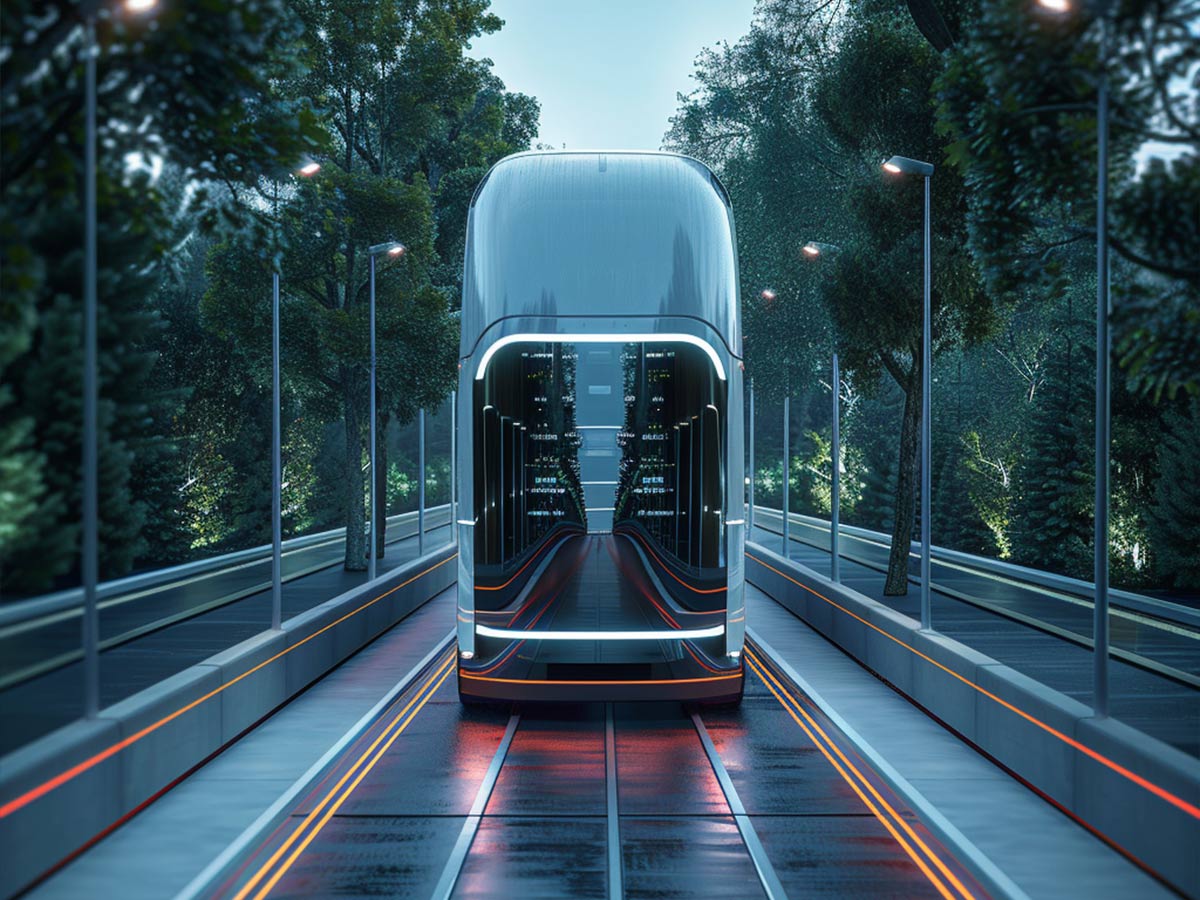
Few drivers love sharing the freeway with big rigs. Maneuvering around these trucks can be difficult at times since their visibility is so limited. And with one misstep, accidents involving semi-trucks can be exceedingly catastrophic.
Autonomous trucks have the potential to revolutionize freight transportation, taking human error out of the equation. Lanes dedicated to self-driving big rigs could provide a safe network of roads specifically for these vehicles – so non-commercial drivers no longer have to live with the dangers of driving next to one.
 Author
James Stephens
Last Updated: September 16, 2025
Author
James Stephens
Last Updated: September 16, 2025